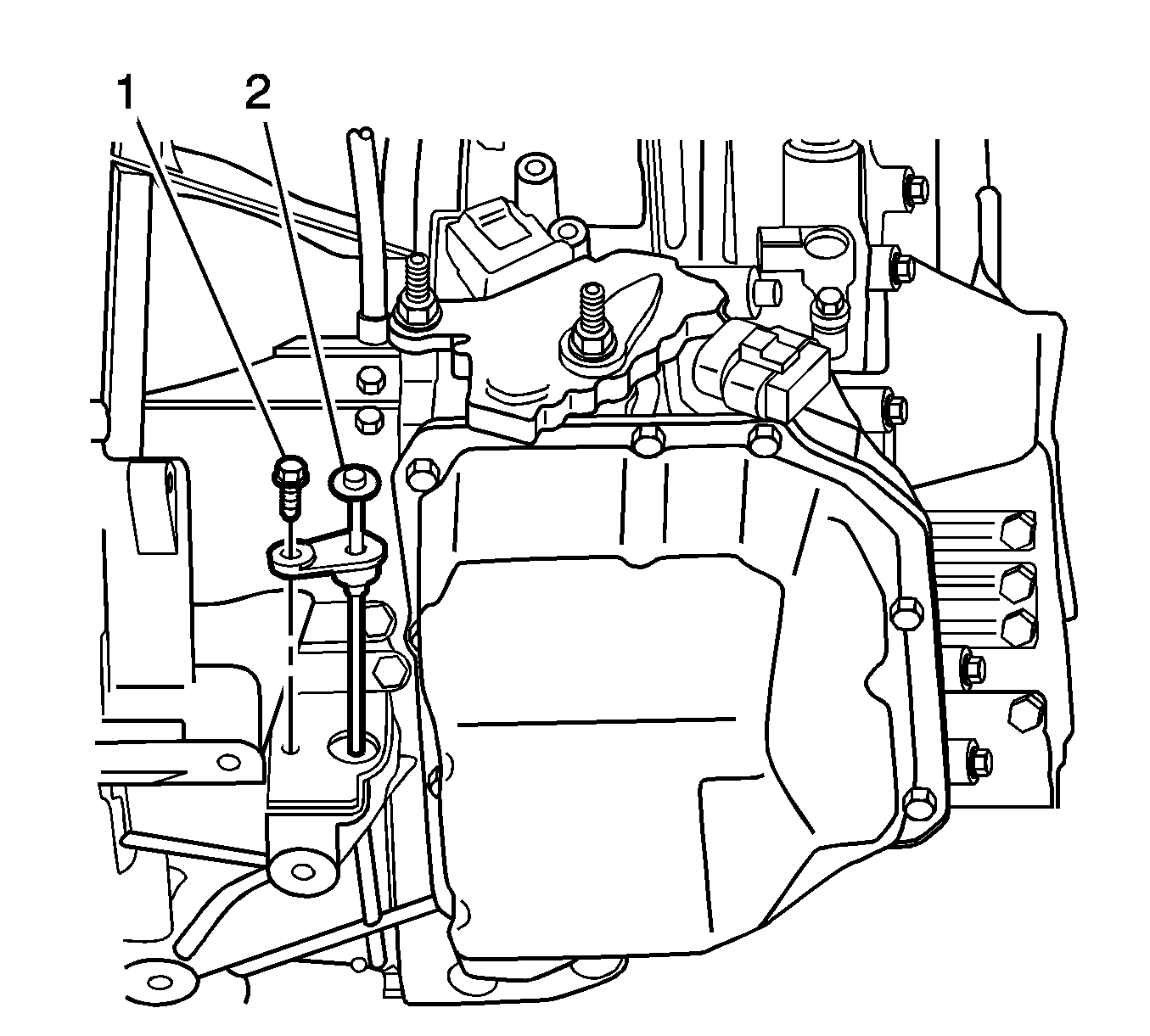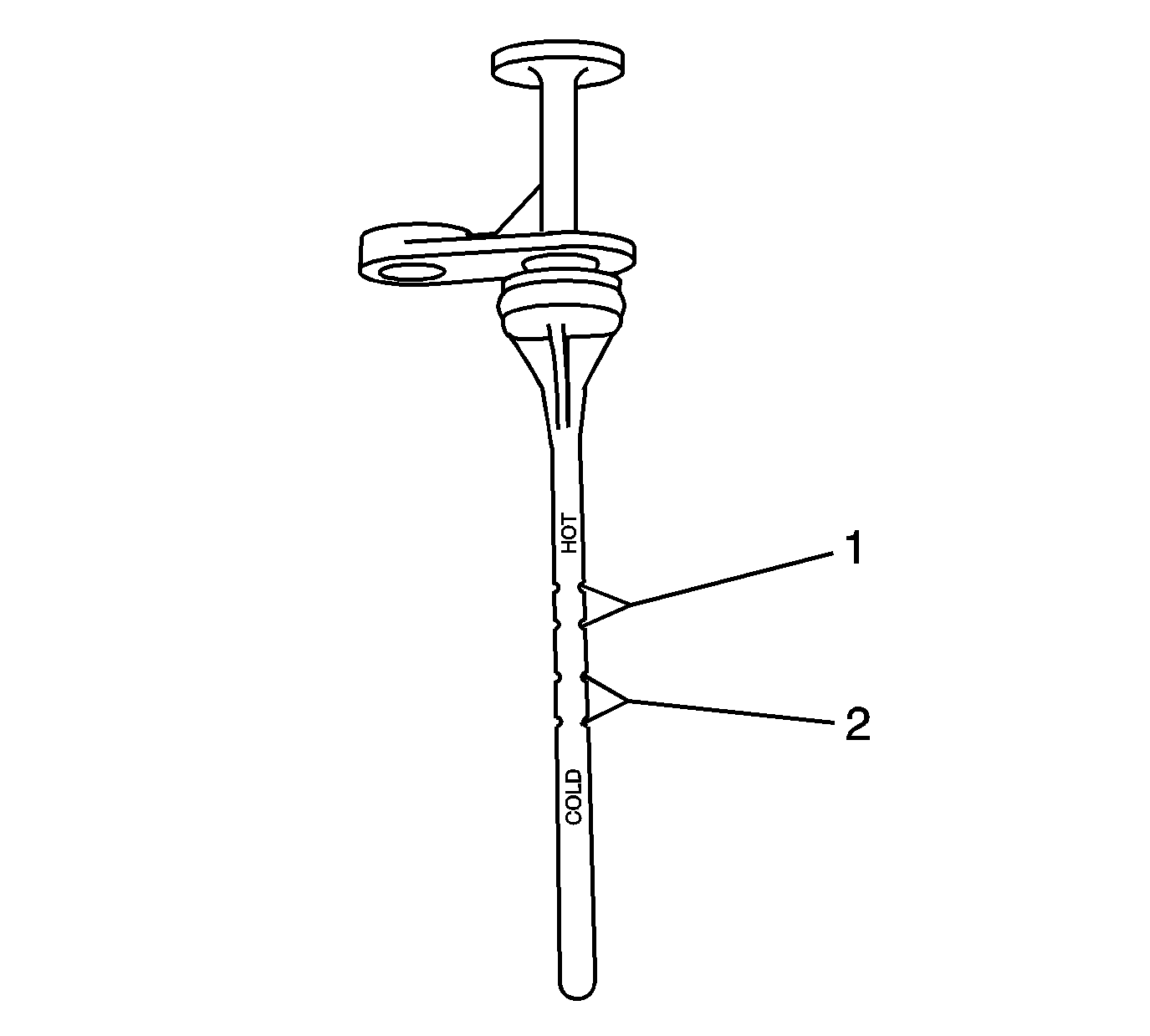Description
Inspection of the transaxle fluid level, correct type of fluid, and the condition of the fluid for accurate operation of the transaxle.
Procedure

Important: Routine inspection of the transaxle fluid is not required. Transaxle fluid inspection is only required if there is a symptom indicating a concern with the fluid.
- Park the vehicle on a flat level surface.
- Operate the vehicle in order for the transmission fluid temperature to reach the normal operating range.
Specification
Transaxle normal temperature: 60-70 degrees C (140-158 degrees F)
- With the engine at idle, manual shift through all transaxle ranges and return to the PARK position. Leave the engine idling.
- Clean any dirt or debris away from the area of the transaxle fluid level indicator.
- Remove the transaxle fluid level indicator bolt (1) from the transaxle.
- Remove the transaxle fluid level indicator (2).
- Wipe away any transaxle fluid from the indicator.
- Insert the indicator into the transaxle until fully seated.

Important: Inspecting transaxle fluid level when not at normal temperature can give an incorrect measurement. The transaxle fluid expands when warm.
- Remove the indicator and inspect the level and the condition of the oil on the indicator:
| • | Transmission fluid level at normal operating temperature (1) |
| • | Transmission fluid level if cold (2) |
- If the fluid level is incorrect inspect for the following conditions:
| • | Fluid above level, inspect for contamination of the fluid. |
Important: The tranaxle uses T-IV fluid, GM P/N 88900925 (Canadian P/N 22689186). The fluid is normally red in color. The oil may darken in color with more miles on a vehicle.
- Inspect the condition of the fluid for the following conditions:
| • | Excessively dirty with particles in the fluid |
| - | If drivability concerns are present disassemble and inspect for a cause. |
| - | Inspect for conditions that may of cause overheating of the transmission fluid. Refer to
Transmission Overheats
. |
| - | If drivability concerns are present disassemble and inspect for cause. |
| - | Disassemble the transaxle and inspect for components that may have over heated. |
| • | Milky or white tint in color from coolant or water |
| - | Inspect for missing or improperly routed vent hose. |
| - | Inspect for missing fill plug. |
- Install the fluid level indicator.
Notice: Refer to Fastener Notice in the Preface section.
- Install the fluid indicator bolt.
Tighten
Tighten the fluid indicator bolt to 10 N·m (89 lb in).


